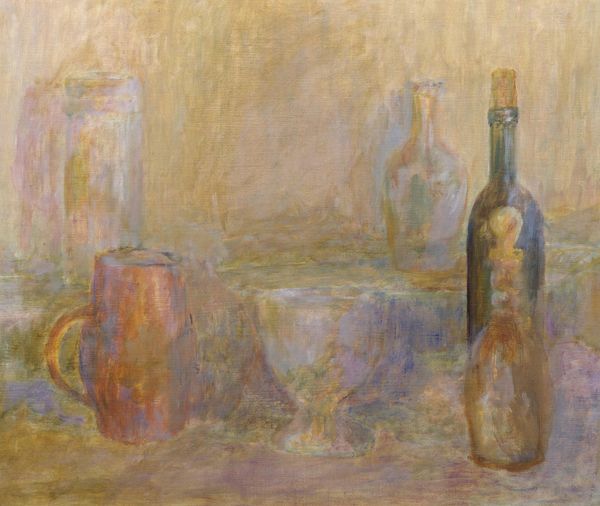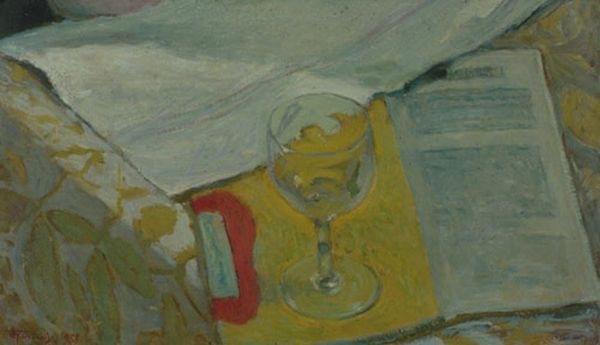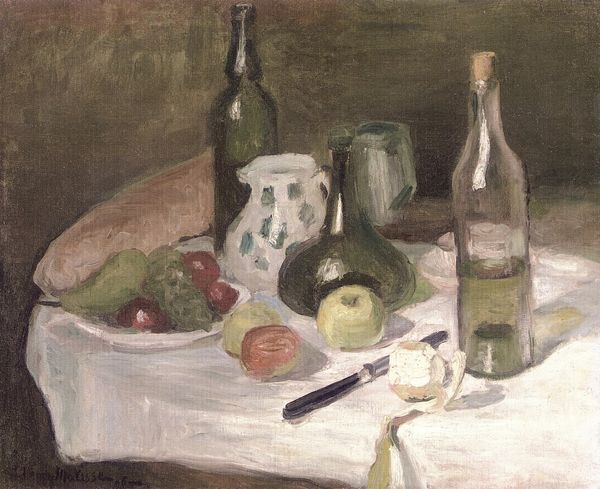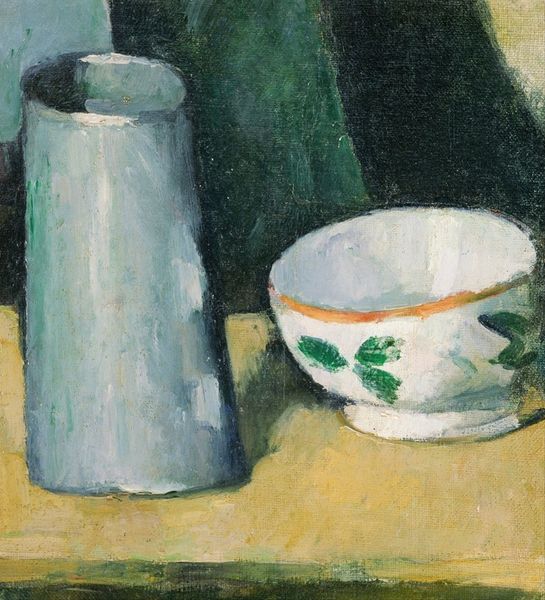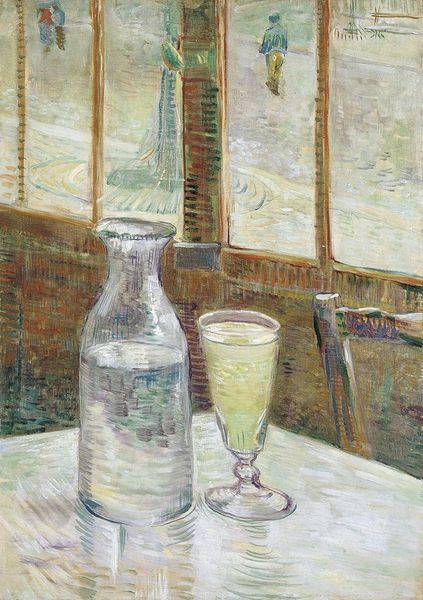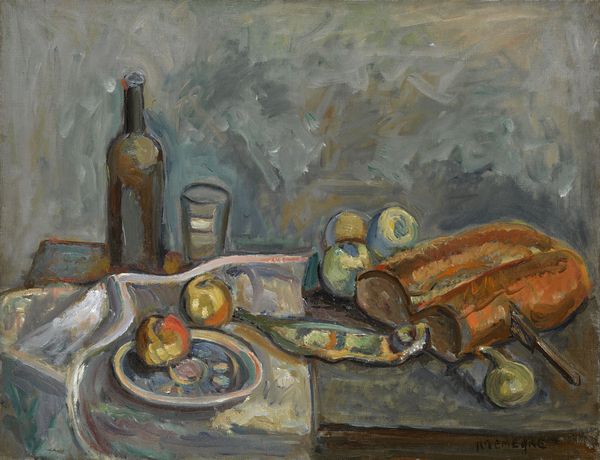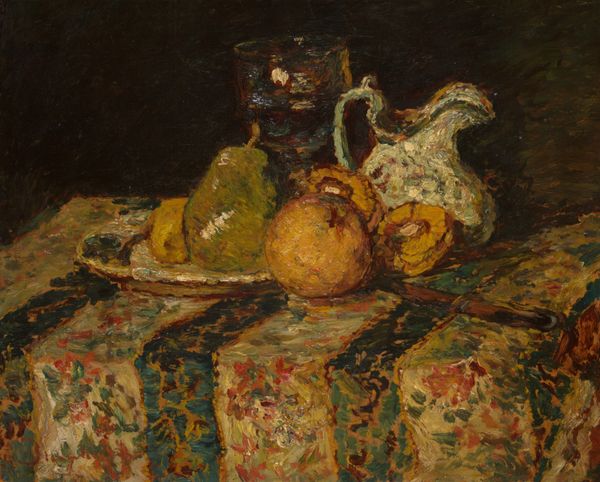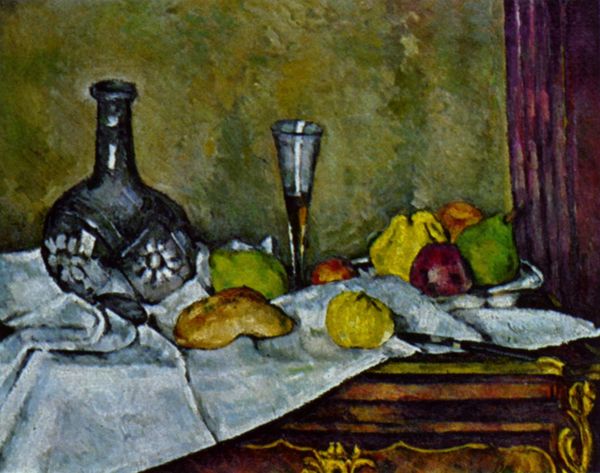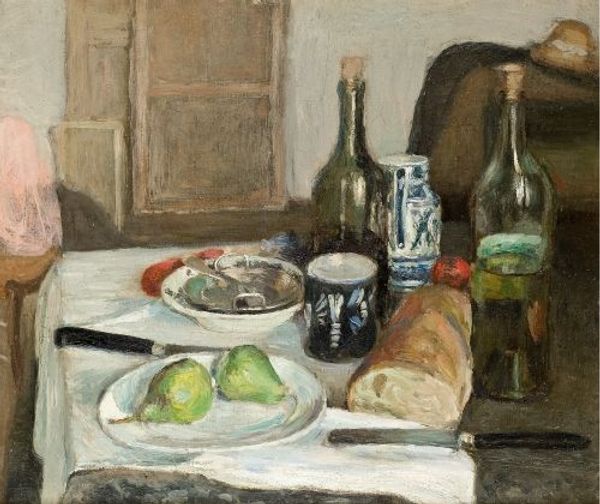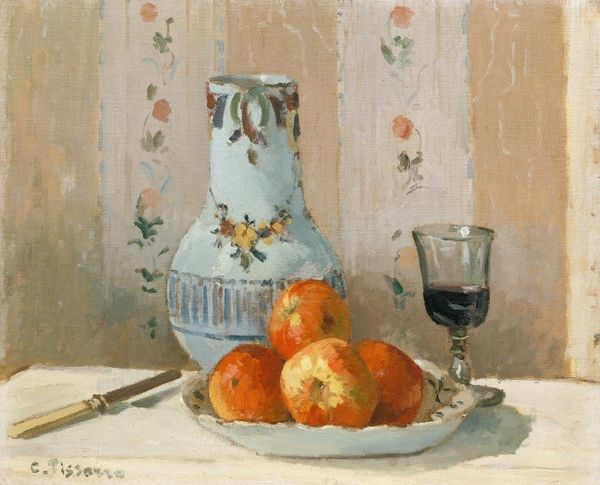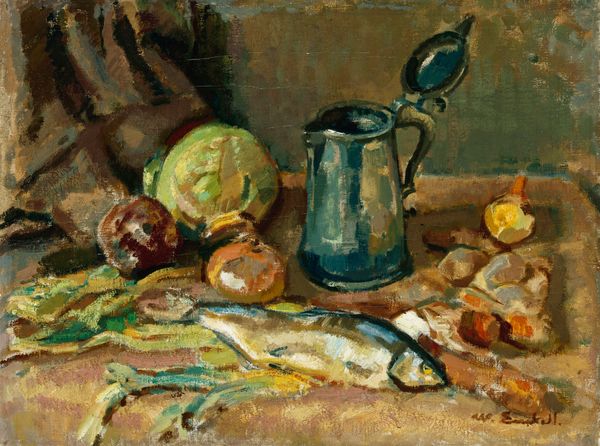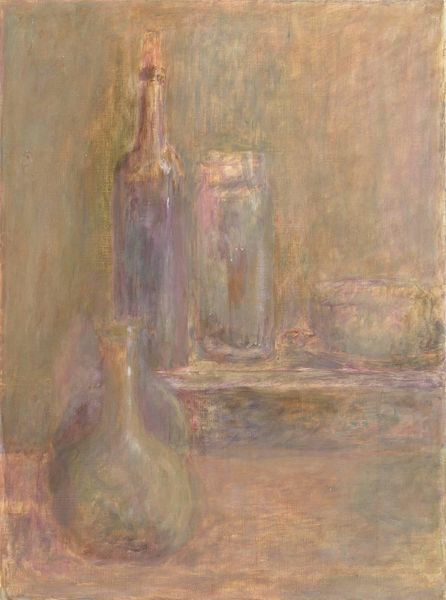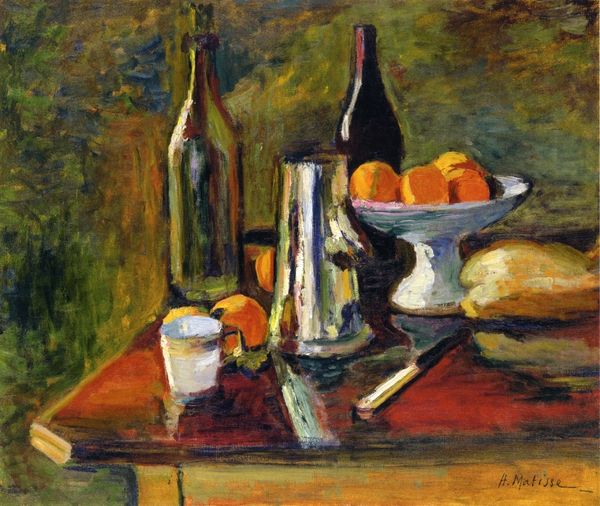
Dimensions: support: 409 x 328 mm
Copyright: CC-BY-NC-ND 4.0 DEED, Photo: Tate
Editor: Here we have Walter Sickert's 'Roquefort'. It's a still life, intimate in scale, depicting cheese, wine, and bread. I find it intriguing, almost like a stage setting. What do you see in this piece, beyond the obvious domestic scene? Curator: Sickert's 'Roquefort' isn't just about food; it's about class and consumption in late 19th, early 20th-century Britain. The cheese, a luxury, hints at bourgeois indulgence, while the muted palette speaks to the grittiness of urban life. Does the framing draw your eye in any particular direction? Editor: Now that you mention it, the angle seems to focus on the cheese itself, almost making it the central figure. Curator: Exactly! Is he celebrating it, or critiquing the societal values it represents? Think about the social unrest of the time. Food becomes a loaded symbol. Editor: So it’s not just a simple still life, but a commentary on wealth and privilege? That gives me a lot to think about. Curator: Precisely. Art often holds a mirror to society, prompting us to question what's on the table—literally and figuratively.
Comments
Join the conversation
Join millions of artists and users on Artera today and experience the ultimate creative platform.
tate 6 months ago
⋮
From the ending of World War One until 1920, Sickert painted a series of still lifes in his house at Envermeu, outside Dieppe. They arose out of his domestic happiness with his second wife Christine after the privations of the war. The fresh handling of the paint suggests that Roquefort was carried out directly in front of the subject. After the death of his wife in 1920, Sickert gave up still-life painting. He wrote later that 'When Christine was alive, I loved the landscapes there [at Envermeu], because they seemed to belong to her, and the still lifes too, because they were seen in her house'. Gallery label, August 2004
